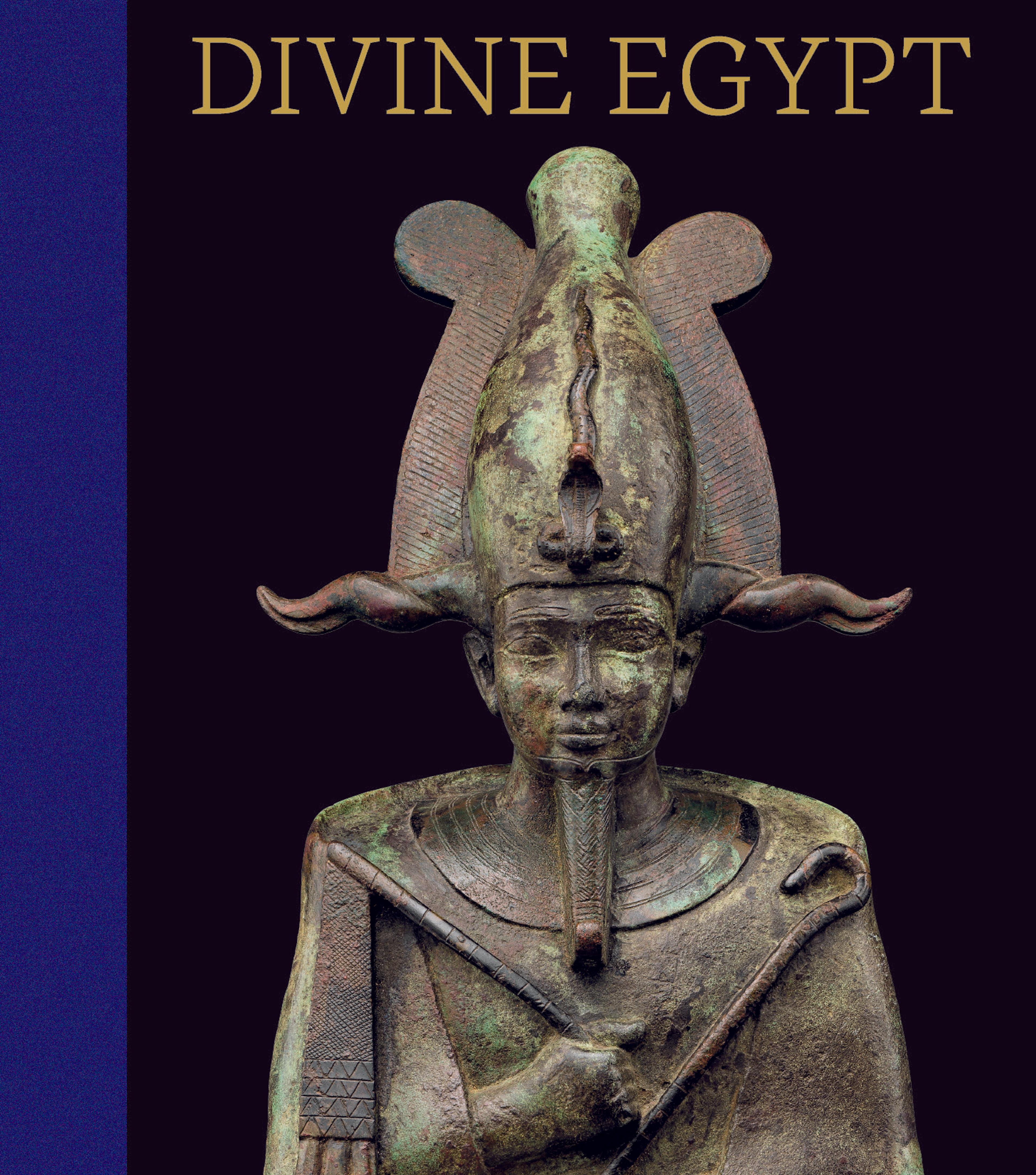Statuette of Harbes with a figure of Osiris
Harbes was an official of the pharaoh Psamtik II. This statue depicts him protecting a figure of the god Osiris. Harbes wears the king's two cartouches on either shoulder. The statue was anciently set up in Karnak Temple at Thebes, where it constitutes a rare example inscribed for this king. By this time a typical Saite style originating in the north has spread throughout the country: Harbes has slightly tipped eyes and curving, although rather thick, lips that follow the style.
On the sides of the statue itself are lengthy invocation offerings to Osiris Wennefer, left, and Amun lord of Karnak, where Harbes' title, read as "Chief Scribe of the Great Prison", is given along with the name of his father Ptahhotep and mother Dinyhetiret. A long oddly laid out inscription is found on the back pillar. Harbes also follows a fashion of the era in receiving or adopting the ''good name'' Psamtiknefer or "King Psamtik is good''. Already in the Old Kingdom, "good names" appeared; however, in the Saite Period, and particularly the reign of Psamtik II, "good names" associating an individual with the pharaoh were very popular.
On the sides of the statue itself are lengthy invocation offerings to Osiris Wennefer, left, and Amun lord of Karnak, where Harbes' title, read as "Chief Scribe of the Great Prison", is given along with the name of his father Ptahhotep and mother Dinyhetiret. A long oddly laid out inscription is found on the back pillar. Harbes also follows a fashion of the era in receiving or adopting the ''good name'' Psamtiknefer or "King Psamtik is good''. Already in the Old Kingdom, "good names" appeared; however, in the Saite Period, and particularly the reign of Psamtik II, "good names" associating an individual with the pharaoh were very popular.
Artwork Details
- Title: Statuette of Harbes with a figure of Osiris
- Period: Late Period, Saite Period
- Dynasty: Dynasty 26
- Reign: reign of Psamtik II
- Date: 595–589 BCE
- Geography: From Egypt, Upper Egypt, Thebes, Karnak, Temple of Amun, Cachette
- Medium: Metagraywacke
- Dimensions: H. 61 × W. 12.5 × D. 20.5 cm, 21.1 kg (24 × 4 15/16 × 8 1/16 in., 46.6 lb.)
- Credit Line: Rogers Fund, 1919
- Object Number: 19.2.2
- Curatorial Department: Egyptian Art
More Artwork
Research Resources
The Met provides unparalleled resources for research and welcomes an international community of students and scholars. The Met's Open Access API is where creators and researchers can connect to the The Met collection. Open Access data and public domain images are available for unrestricted commercial and noncommercial use without permission or fee.
To request images under copyright and other restrictions, please use this Image Request form.
Feedback
We continue to research and examine historical and cultural context for objects in The Met collection. If you have comments or questions about this object record, please contact us using the form below. The Museum looks forward to receiving your comments.
